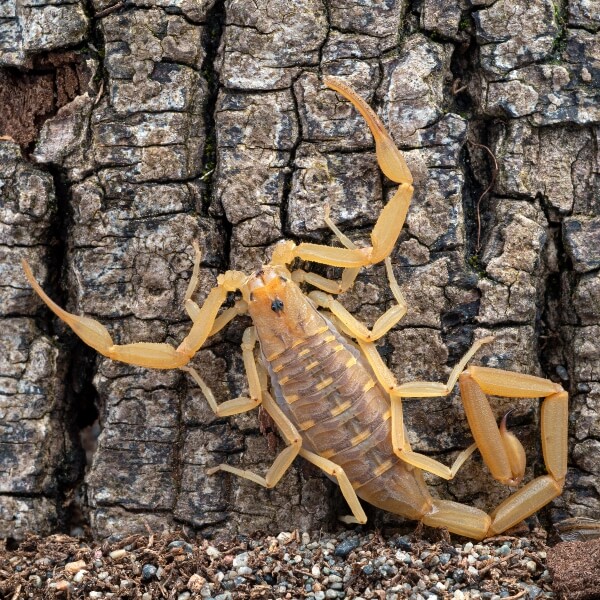Arizona Bark Scorpions in Anaheim
Arizona bark scorpions are nocturnal pests that are well-adapted to desert environments. As their name suggests, they often hide in tree bark during the day to retain moisture and stay hidden from the sun. They primarily feed on spiders, insects, centipedes, and sometimes even other types of scorpions. Arizona bark scorpions are also the most venomous scorpions in the United States, and their stings can sometimes be fatal.
Arizona Bark Scorpion Habitat
Arizona bark scorpions have remarkable adaptations that help them thrive in their arid desert habitat. They sport sensitive “hairs” on their legs and body, which detect vibrations in the air. To escape the scorching daytime heat, they seek refuge in the shade and emerge at night to hunt for food. During the winter months, these scorpions hibernate, often forming large groups for protection and warmth. These resilient scorpions can be found in various habitats, thanks to their climbing ability. While they are often discovered under rocks or in rock crevices, they can also scale trees and occupy high positions on rock walls.
Arizona Bark Scorpion Behaviors, Threats, or Dangers
Arizona Bark Scorpions, though relatively small in size, pose a significant danger to humans. They are considered one of the most venomous scorpions in North America. Their stinger at the end of their tail contains a potent venom that can cause severe pain, swelling, and discomfort when injected into their prey or, unfortunately, humans. While their sting is rarely fatal, it can be particularly dangerous to children, the elderly, or individuals with weakened immune systems, potentially leading to more severe symptoms. If stung, it is crucial to seek medical attention promptly, as antivenom is available to counteract the effects of their venom.


